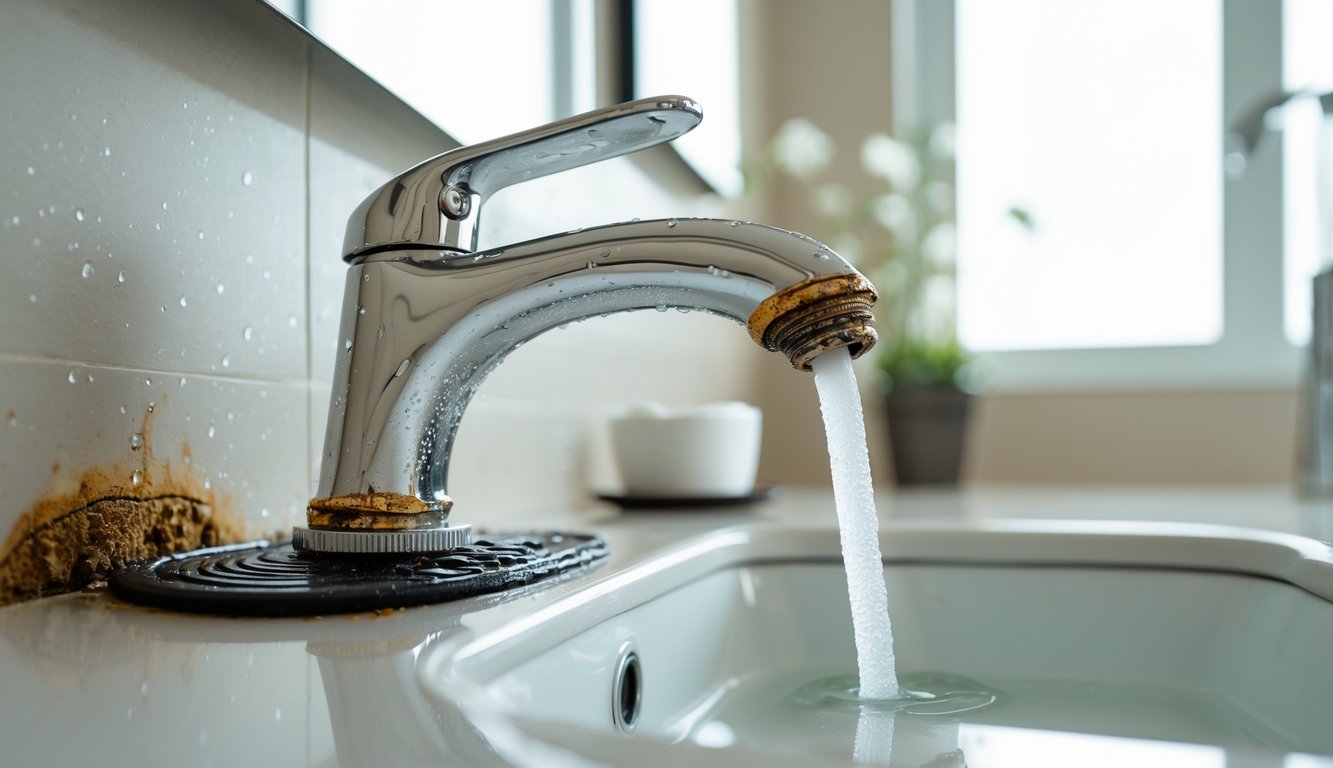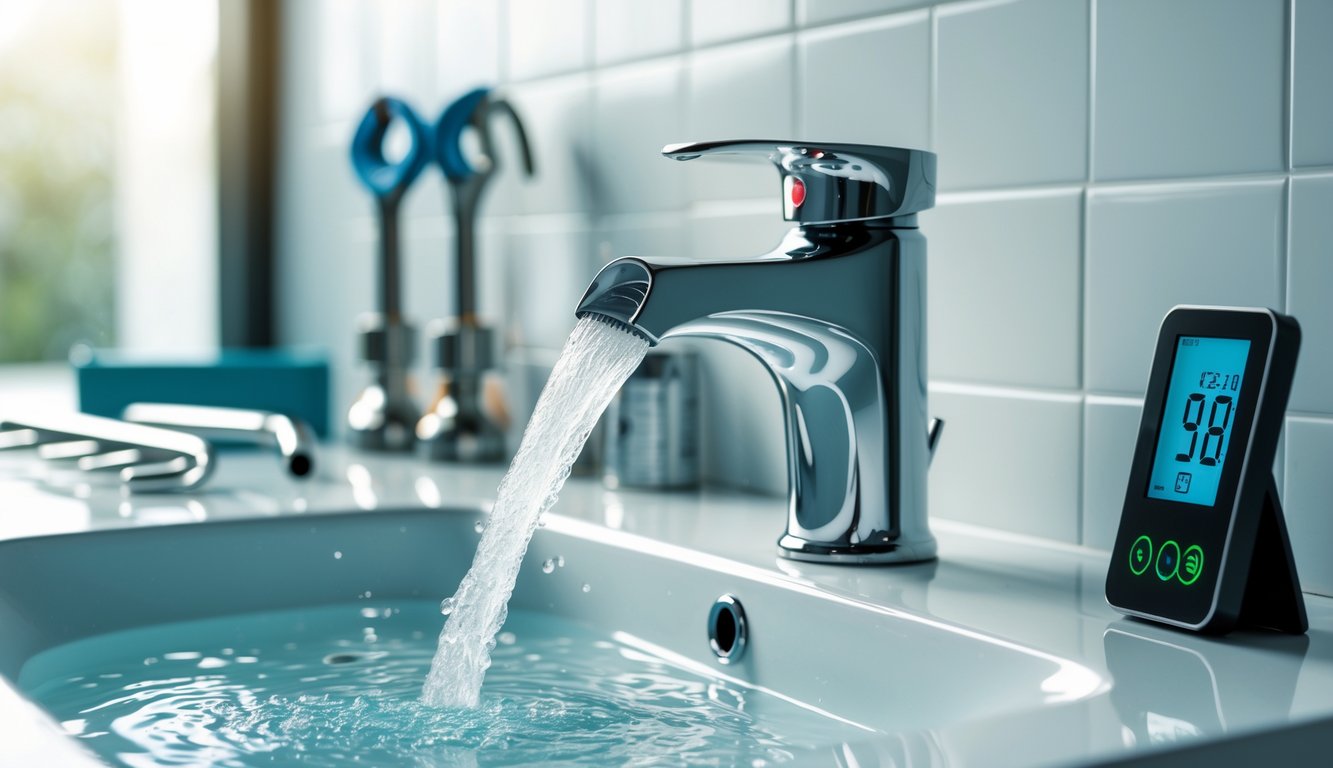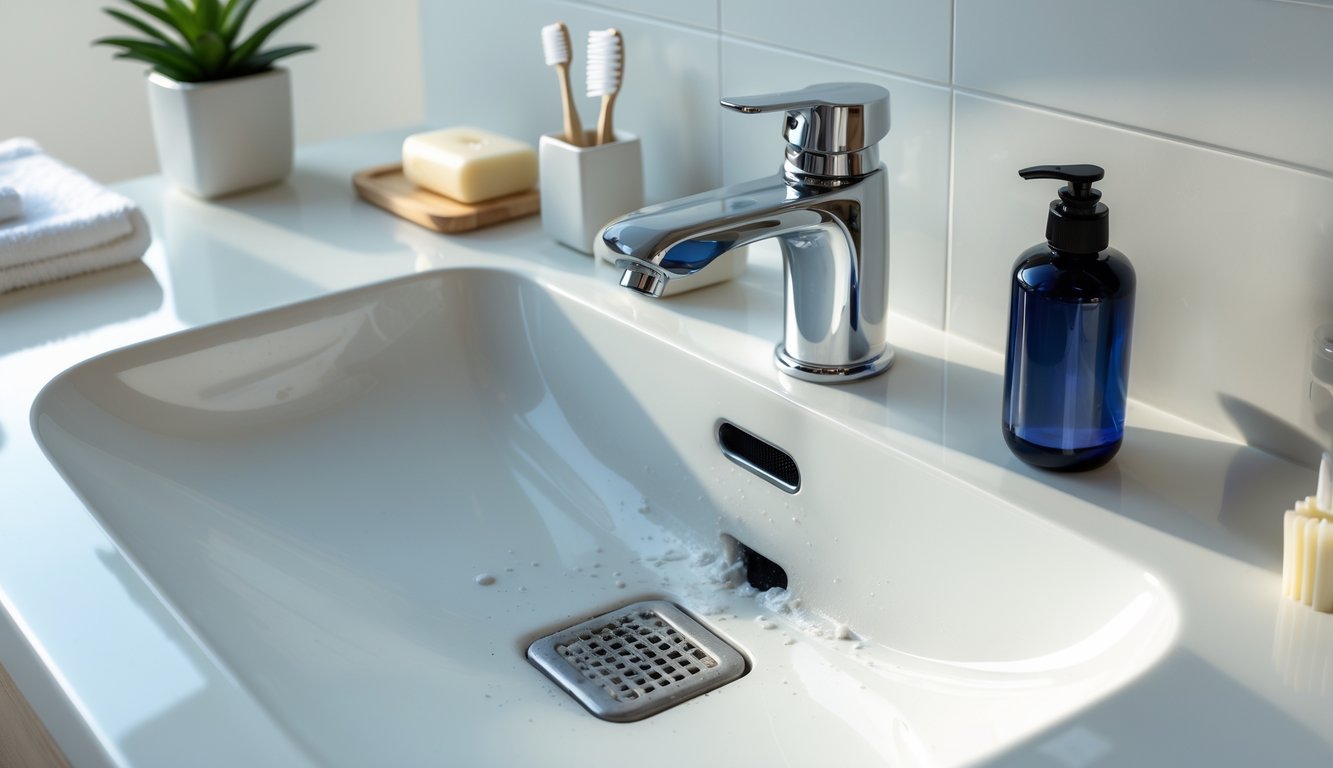
Impact on Water Pressure and Temperature

Nobody ever talks about how swapping one fixture can turn your pipes into a haunted house. Sure, your sink looks fancy, but suddenly the water’s either dribbling or blasting, and your heater sounds like it’s plotting revenge. “Pressure’s pressure,” people say. Nope. I’ve seen showers go from spa to Arctic blast overnight. Ask a plumber—they’ll tell you.
Inconsistent Water Flow
I watched a “designer” rainfall showerhead (so pretty, so useless) turn a normal morning into a roulette wheel of freezing and scalding. Some of these fixtures guzzle water, and it doesn’t matter how solid your main line is. Undersized pipes plus oversized hardware? Get ready for a symphony of trickles and surges, sometimes in the same minute. Why is this normal?
A plumber once showed me pressure readings—one sink bouncing between 35 and 70 PSI. That’s not just “quirky,” that’s pipe-breaking territory. Anything over 60 PSI? Experts say nope. And if you’ve got hard water, all those minerals just pile up faster in fancy fixtures. That rainfall head? It’s basically a rock garden now.
And am I the only one who finds that “pshhhht” noise right before the water dies kind of satisfying? Probably. Water softeners help, but they don’t fix a hardware mismatch. Not even close.
Hot Water Heater Compatibility Issues
Here’s what nobody admits: you install a “spa” shower panel, crank all the jets, and halfway through—bam, ice bucket challenge. Not the heater’s fault. It just can’t keep up. I’ve asked three plumbers and every single one groans, “Nobody checks the GPM ratings.” It’s wild. If your new fixture slurps more gallons per minute than your hot water heater can cough up, you’re getting a cold surprise—especially if someone flushes a toilet.
Tankless heaters? Sometimes they try, sometimes they just throw an error and give up. I’ve seen “improper installation” void warranties—good luck explaining that to customer service. My only real advice: check the draw at full blast, not just what looks cool at the store. And, yeah, I’ve seen a heater display throw a blinking code mid-shower. Not fun. Not “spa-like.” Just cold.
Fixture Choices That Attract Drain Clogs

People think a pretty bathroom keeps drains clear. Nope. You skip the right fixture or forget a drain catcher, and suddenly every shower is a countdown to a plumber’s visit. Style is cool, but so is not standing in ankle-deep water.
Importance of a Proper Drain Catcher
Let’s just say it: not using a drain catcher is like daring your pipes to choke. I fell for those “decorative grates” that look minimalist but let hair slide right through. Never again.
A plumber once handed me a cheap mesh screen—off the shelf, nothing fancy—and it trapped everything. Stainless steel? Yes. Plastic? No. Big holes? Useless. Plumbing advice says the same: ugly mesh beats “designer” every time. Clean it out every few days (gross, but whatever), skip the chemical “miracles,” and don’t trust the packaging. If you’ve ever dropped rice or beads down the drain, you know those decorative covers are a joke.
Fixtures That Trap Debris
You want to know what really eats jewelry, hair ties, and kids’ toys? Freestanding tubs, double basins, and those “modern” push-pull stoppers. Manufacturers act like they’re upgrades, but the gaps are huge. Nobody cleans them, so they just clog faster.
Rimless sinks and low-profile basins? House Sanctuary Builders points out they’re impossible to fit with a proper catcher. I’ve yanked out ropes of biofilm, toothpaste blobs, and… tiny rubber ducks? No idea. Clean lines look great until you’re fishing jewelry out of the abyss.
The Problem with Using Chemical Drain Cleaners

Tried everything—baking soda, coat hangers, prayers—but the drain just mocks me. So, yeah, there’s always a bottle of Drano under the sink. Plumbers hate it. I get why.
How Drano Harms Plumbing
Drano stinks up the whole room and makes my eyes water. That’s sodium hydroxide, sometimes sulfuric acid—brutal stuff. PVC pipes might survive once, but metal? Forget it. I’ve seen copper joints flake, galvanized pipes rot, and plastic traps go soft after too many “quick fixes.” My old apartment’s sink never worked right again after my roommate’s Drano habit.
And plunging after Drano? Plumbers hate it—now it’s hazardous. Expert warnings are everywhere: pipe walls thin out, then split, and suddenly you’re dealing with leaks behind the walls. Plus, the chemicals eat away at new gasket seals. Ads never mention that part.
Safe Alternatives for Clog Removal
The “miracle pour-and-walk-away” cleaner? Not so miraculous. I’ll grab a wet/dry vac or a $10 snake first. My uncle (plumber, not the weird one) swears by boiling water and dish soap for food clogs—never on plastic pipes, though. Sometimes a plunger just wins.
Enzyme-based cleaners—actual bacteria, who knew—work better and don’t wreck your pipes. Non-chemical solutions come up a lot in pro circles. And honestly, my drains got way happier when I stopped pouring bacon grease down them. It’s not glamorous, it’s not instant, but it beats standing in backflow. If you love wading through mystery puddles, then sure, keep using the chemical stuff.